PART.2
The necropolis is located near the town of Mezmay. Grave robbers discovered the site in 2004 and rescue excavations began in 2005.
Who used the necropolis?
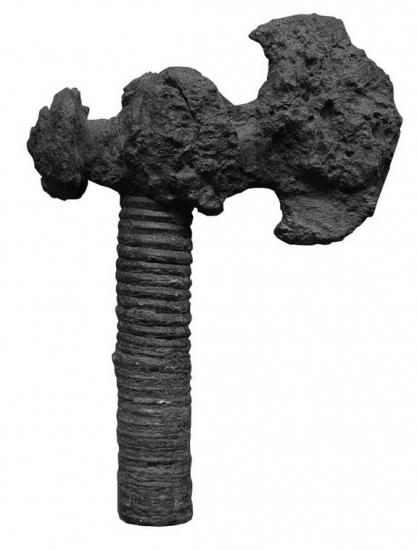
This iron axe is one of many weapons found with the burial of the warrior. CREDIT: Photo courtesy Valentina Mordvintseva
Based on the artifacts, researchers believe the warrior's burial dates back around 2,200 years, to a time when Greek culture was popular in west Asia, while the necropolis itself appears to have been in use between the third century B.C. and the beginning of the second century A.D.
Researchers were careful to note that the artifacts cannot be linked to a specific archaeological culture. Mordvintseva points out that "this region is very big, and not sufficiently excavated," particularly in the area where the necropolis is located. "[I]t is situated high in mountains. Perhaps the population of this area [had] trade routes/passes with Caucasian countries — Georgia, Armenia etc.," Mordvintseva writes in the email.
While the people who used the necropolis were clearly influenced by Greek culture, they maintained their own way of life, said Mordvintseva. "Their material culture shows that they were rather very proud of themselves and kept their culture for centuries."
Gold treasures
This way of life includes a fondness for gold-working. The warrior's burial included more than a dozen artifacts made of the material. Perhaps the most spectacular find was a gold fibula-brooch with a rock crystal at its center. Although the brooch was only 2.3 by 1.9 inches (5.8 by 4.8 centimeters), it had several layers of intricately carved decorations leading toward the mount.
"Inside the mount a rock-crystal bead has been placed with a channel drilled through it from both ends," the researchers write.
The team was surprised to find that two of the warrior's swords (including the one pointing toward his pelvis) had gold decorations meant to be attached. In one case a short 19-inch (48.5-cm)-long iron sword had a gold plate, with inlayed agate, that was meant to adorn its sheath. Until now, scholars had never seen this type of golden sword decorations in this part of the ancient world, the researchers write. The "actual fact that these articles were used to decorate weapons sets them apart in a category all of their own, which has so far not been recorded anywhere else ..."
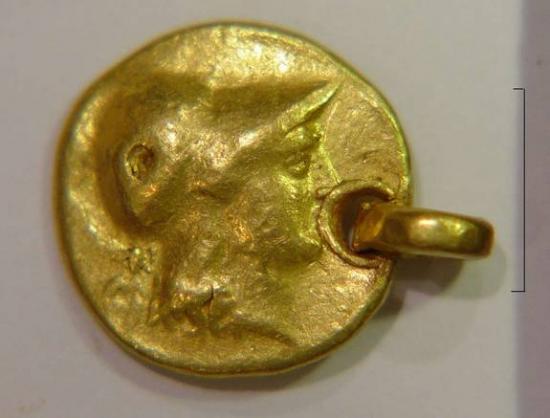
This pendant was fashioned from a gold coin. One side (seen here) shows the head of the goddess Athena in a helmet facing right. The other side shows Nike, goddess of victory, along with a star. Credit: Photo courtesy Valentina Mordvintseva
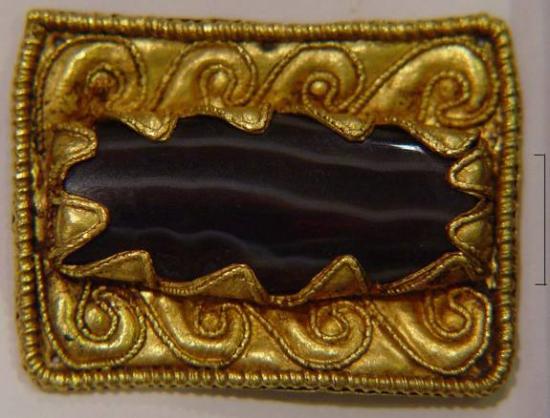
This gold plaque, with mounted agate, would have been attached to the sheath of a short iron sword. It is less than 2 inches across. Credit: Photo courtesy Valentina Mordvintseva
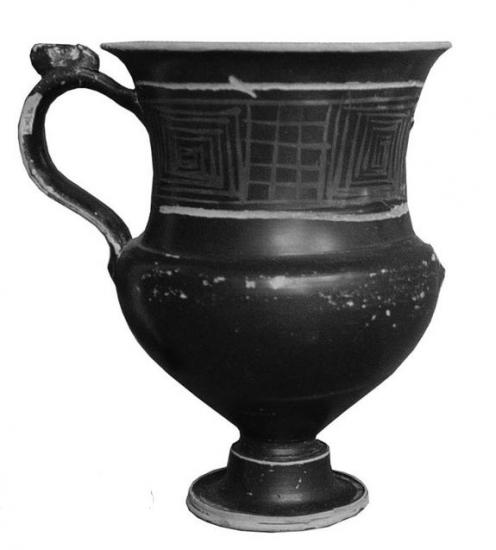
This black glazed cup is decorated with geometric drawings. Credit: Photo courtesy Valentina Mordvintseva
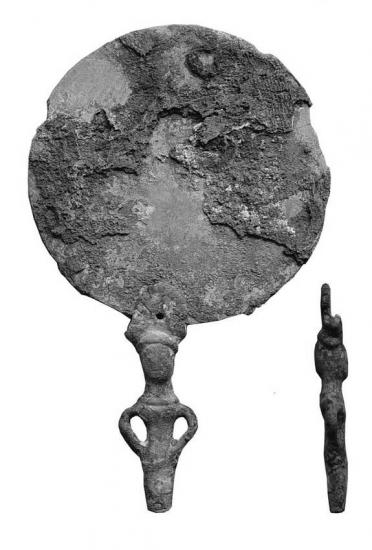 This bronze mirror contains a base in the shape of a goddess with an ornament, in the shape of a palmette, to the right. Credit: Photo courtesy Valentina Mordvintseva
This bronze mirror contains a base in the shape of a goddess with an ornament, in the shape of a palmette, to the right. Credit: Photo courtesy Valentina Mordvintseva
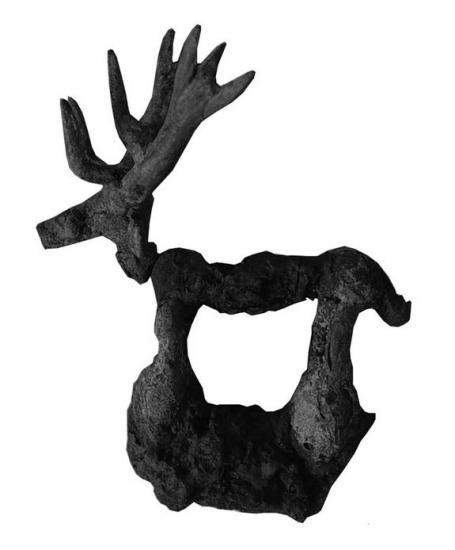
This deer formed part of a tripod. The head (including antlers), chest and rear are made of bronze, while the trunk and neck were constructed with iron. Credit: Photo courtesy Valentina Mordvintseva